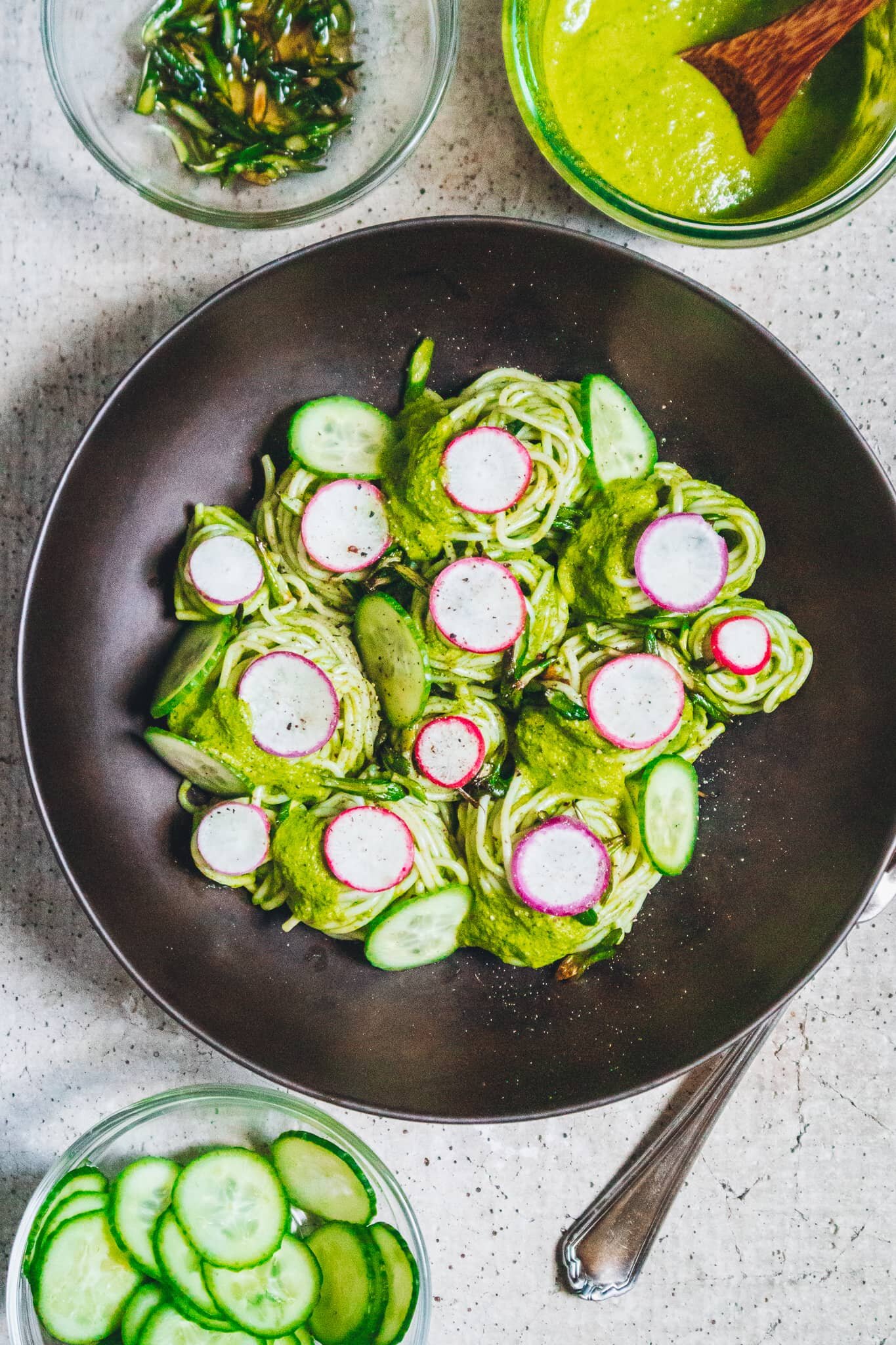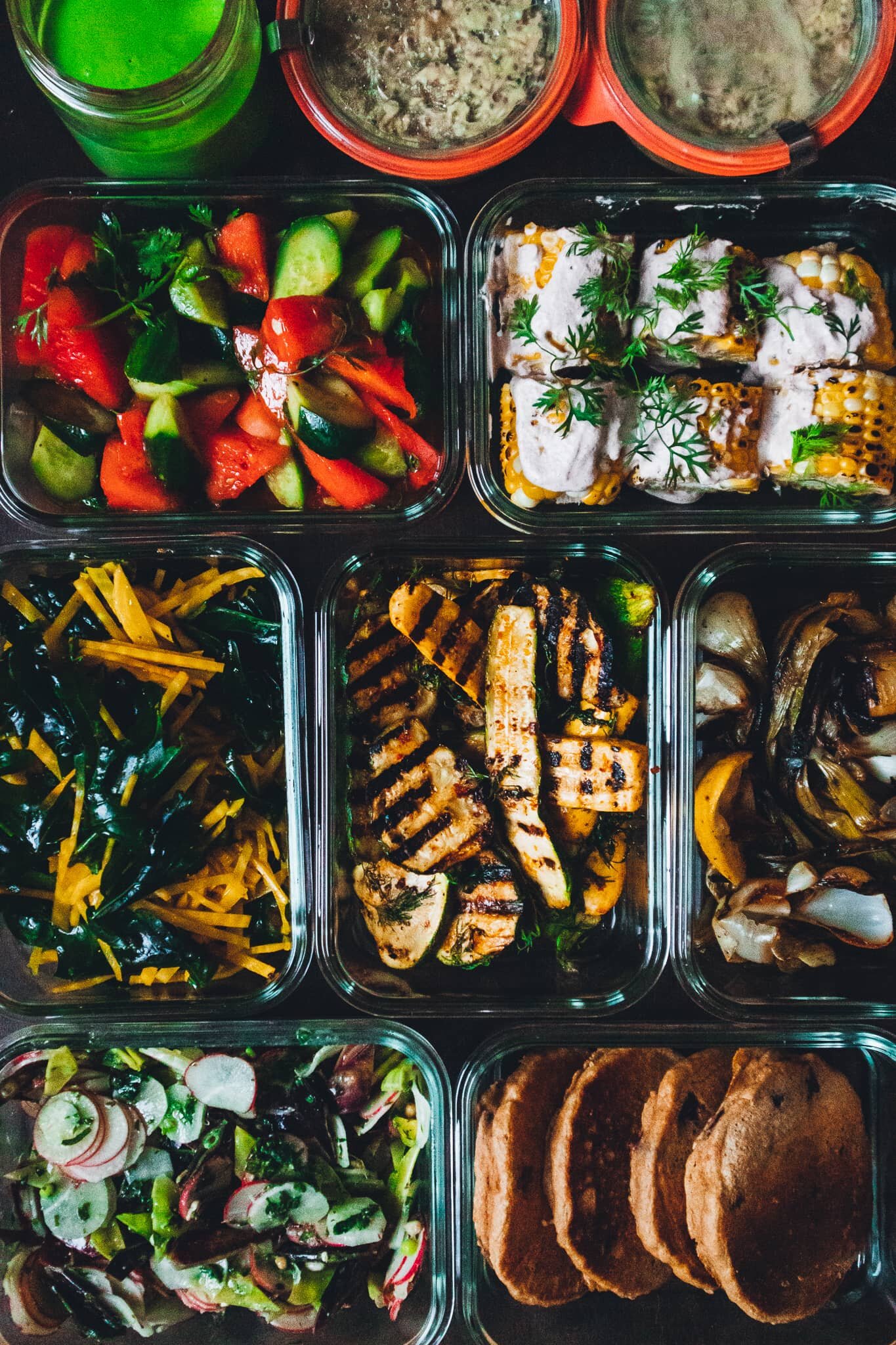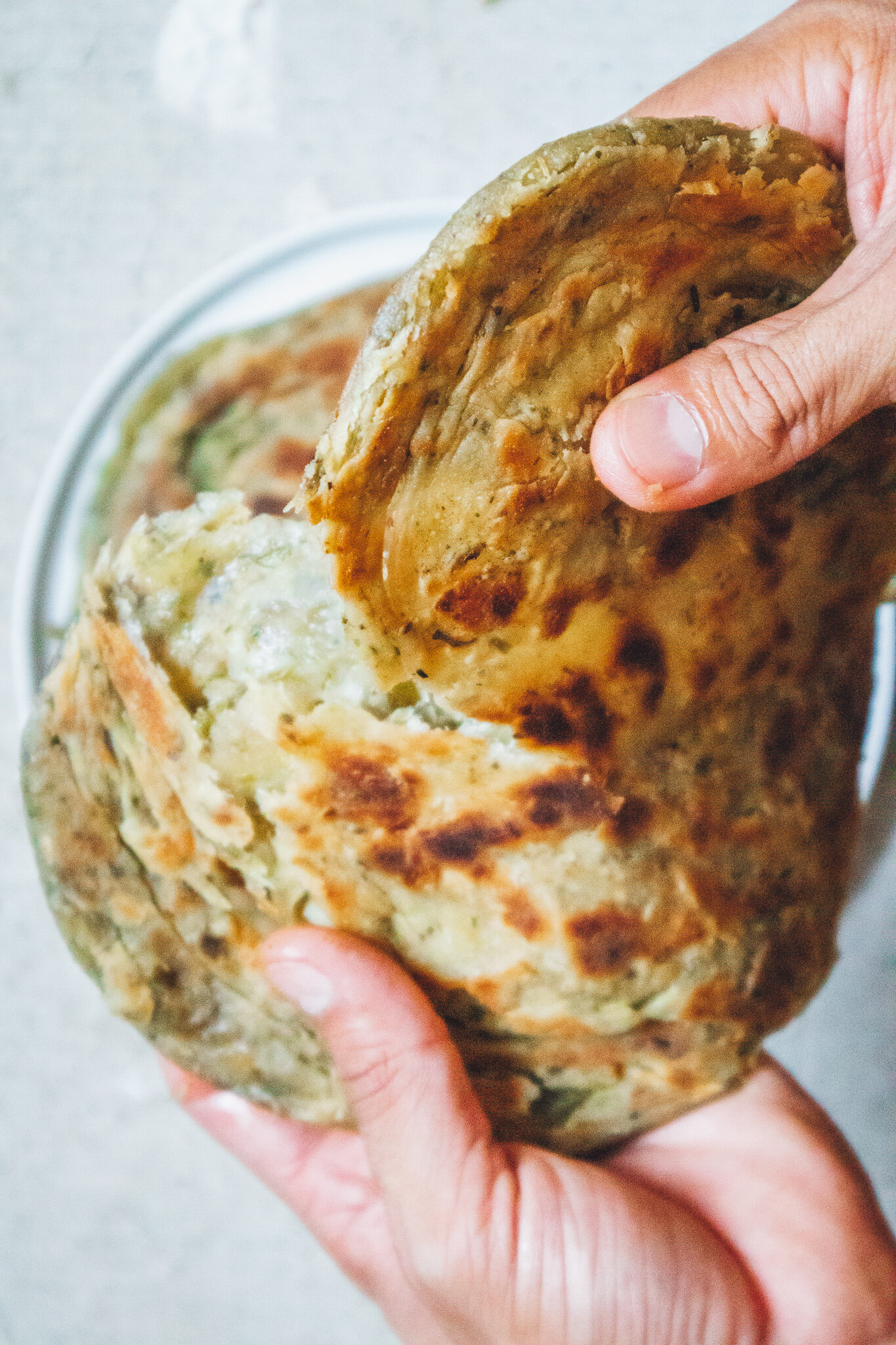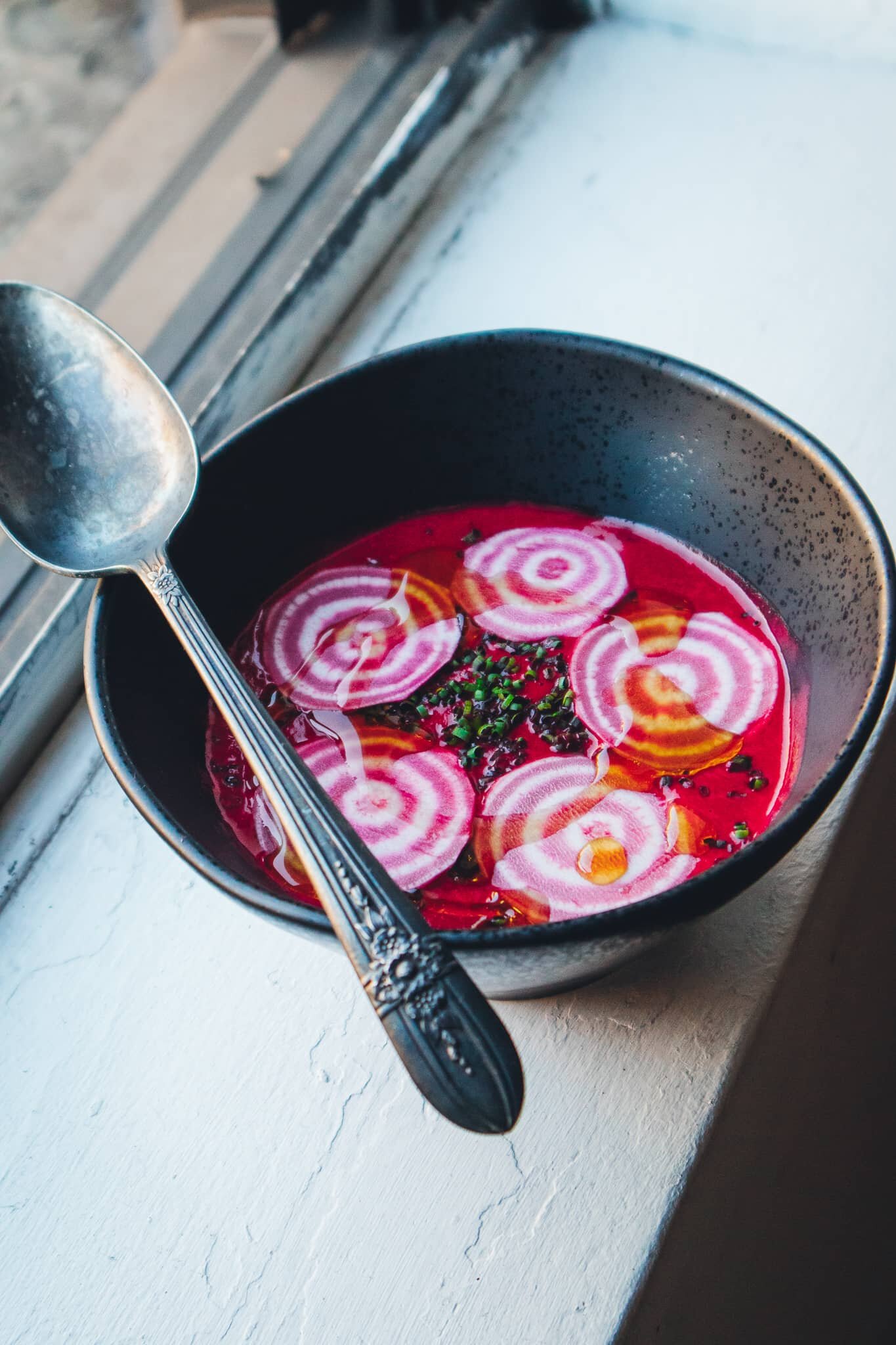Fermented Beets in Brine
March 30, 2021
Gluten-free · Nut-free · Soy-free
I love doing my own fermentations, it’s so much fun! With every new fermentation process, I learn more about it, and the best part is I get to eat as I learn (isn’t that the joy of being a chef?). AND fermented foods happen to be very good for gut health—win, win!
You might have seen fermented beets at the store, but when you make them yourself you’re going to:
1) save a lot of money because you can make a big batch for next to nothing, and
2) customize it however you want with your own flavorings so you have them the way you like them.
I like to flavor them with spices and herbs. In this recipe I only use thyme, but take it as a base recipe that you can build on.
The reason I cut the beets into juliennes (matchsticks) instead of grating them is because the fermentation process makes everything go soft, so when I used grated beets it just turned them all into mush. So matchsticks are much better suited to withstand the process and will turn perfectly soft but still with some resistance to hold together.
However, if you do wish to have the beets grated, I would suggest you ferment them only using salt—no water—and press them with a weight. That way the beets will soften due to the salt, but they won’t have all that water to absorb and therefore won’t get mushy. Let me know if you’d like me to do a recipe doing this so that you can see the difference.
Note: Make sure to use filtered water, since regular tap water contains chlorine which won’t help with the fermentation process.
It’s very important to work clean and to sanitize your containers when fermenting food, otherwise, unwelcome microbes could be produced in the process and ultimately damage your product. Before making the recipe, please read the Basic Rules for Fermenting below to ensure you use the safest practices.
BASIC RULES FOR FERMENTING
Before you start any kind of fermenting, it’s important to understand these basic rules that apply to all fermentation processes to ensure a safe environment and safe food.
-
Clean and sanitize your workspace before doing anything else. You can use hot water and soap, white distilled vinegar, or at least 60% alcohol.
-
Sanitize your fermenting jar and any tools you’ll be using. To do this, you can either run everything through the dishwasher or place your jar and tools into a pot full of boiling water and boil for 5 minutes.
-
Wash your hands thoroughly.
NOTES:
The ideal temperature for this lactic acid fermentation is between 64.5- 71.5 F.
In this fermentation, we want to create lactic acid bacteria, which is tolerant to high salt concentrations.
Substitutions
-
Instead of purple beets, you could use any type of beets you like (golden, candy cane, red, etc).
-
Rosemary would really well with the beets instead of thyme.
-
For more flavor, add toasted spices such as peppercorn, cumin, star anise, fenugreek, fennel, or coriander seeds.
EQUIPMENT
For this process, you’ll need 1-quart glass jar + lid that have been sterilized (you can do this by running them through your dishwasher or boiling it in water for 5 minutes), 1 metal spoon, 1 large bowl, a small Ziploc bag or sterilized weights, and a kitchen scale.
Uses
Use these fermented beets in:
-
sandwiches
-
tacos
-
pitas
-
falafel
-
a vegetable platter
-
as a side
-
as a topping
-
or even purée it and use it in sauces or dressings
Makes about 3 cups
Ingredients
361g purple beets, julienned
8g sliced garlic
5g thyme sprigs
440ml filtered water
11g sea salt or kosher salt (avoid iodized salt)
Method
-
In a large bowl, mix the water with the salt until the salt is completely dissolved.
-
Add the beets to the sterilized jar along with garlic and salty water. Make sure there is at least 1 inch of space at the top of the jar. Add the thyme to the top (it’ll also help to press the beets down and make sure they remain under the brine, otherwise mold can happen). If the beets are still above the brine use a sterilized weight like a stone, some cheese cloth, or a Ziploc bag filled with water and sealed.
-
Loosely screw the lid on the jar and store at room temperature. Ideally, you want to keep it at a temperature range of 60 F-75ºF. Monitor it for 4 days, then taste some using a clean utensil. If you like the taste, remove the thyme, screw the lid on tightly and store in the fridge for up to 3 months. If you prefer a stronger taste, leave to ferment for longer until you’re happy with the taste. The longer you leave it, the more acidic and complex flavor it will have.












be the first to comment